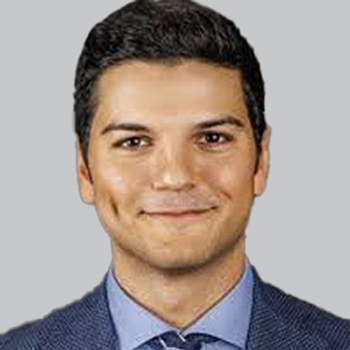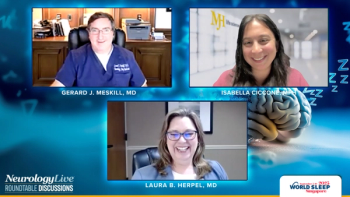
NeurologyLive® Year in Review 2022: Most-Read Features
As part of NeurologyLive®'s Year in Review, we've compiled the most-read feature-length stories that appeared on the website in 2022.
Throughout the course of the year, the NeurologyLive® team and a number of clinician and physician partners put together feature-length, in-depth articles that encapsulate the topics and themes that have driven the conversations in the field of neurology in 2022.
From a review of the ongoing shortage of physicians to an overview of the achievements that the field has experienced, these stories offer insight from a variety of experts in neurology. Featuring commentary and perspectives from those involved in clinical care, advocacy, and industry, these pieces were crafted to provide a deeper look into some of the ongoing discussions, problems, and controversies that have, in part, dominated this year. These pieces were authored not only by staff members of NeurologyLive® but physicians who experience these discussions first-hand.
Here, we'll highlight the most-read features on NeurologyLive® this year. Click the buttons to read further into these conversations.
1. The “Grave Threat” Posed by the Shortage of Neurologists
With the physician deficit projected to grow larger within a decade, this global challenge has become a major focus of large organizations and medical societies. Kenneth Bender, PharmD, MA, explores this challenge in depth, with commentary from Jennifer Majersik, MD, MS; Günther Deuschl, MD; Taylor Harrison, MD; Cathy Sila, MD; Rebecca Fasano, MD; and Calli Cook, DNP, APRN, FNP-C.
2. New Treatments in Migraine: An In-Depth Review
Although new treatments and innovations are a sign of growth in migraine care, it is important to realize that growth comes with a certain amount of pain. In clinical practice, choosing the right treatment option for patients in a time-limited visit is often a dilemma. Jessica Ailani, MD, and Arathi Nandyala, MD, highlight new therapeutic options for both acute and preventive treatment of migraine and discuss their use versus traditional therapies.
3. Treating Familial ALS at the Source: The Introduction of Gene Therapies
As scientific researchers continue to uncover new genetic links to amyotrophic lateral sclerosis, the rise of gene therapies to treat the neuromuscular disease will remain a development to watch in the coming years. NeurologyLive® associate editor Marco Meglio offers a look into how these developments are driving progress, with commentary from Kuldip Dave, PhD, and Matthew B. Harms, MD.
4. The Significance of AMX0035 and a Fueled Hope for ALS
Once thought nearly impossible to treat, ALS has now experienced another step of progress with the approval of AMX0035, and a future of potential therapeutics that sits in the distance. NeurologyLive® associate editor Marco Meglio provides perspective on what this approval meant, with commentary from Josh Cohen, MSc; Richard S. Bedlack, MD, PhD; Sabrina Paganoni, MD, PhD; Neil Thakur, PhD; Justin Klee; and Juliet Taylor.
5. Rapid Progress in ALS: A Reflection of Advances in Neuromuscular Disorder Care
With a burst of activity in recent months, the pipeline of development for amyotrophic lateral sclerosis has proven to be a miniature likeness of the wider progress being made in the care and management of neuromuscular disorders. NeurologyLive® managing editor Matt Hoffman explores this progress, featuring commentary from Justin Klee; Josh Cohen, MSc; Merit Cudkowicz, MD, MSc; Matthew Kiernan, MBBS, PhD, DSc, FRACP, FAHMS; Matthew B. Harms, MD; Calaneet Balas, MSc, MBA; Jinsy Andrews, MD, MSc, FAAN; Amy Shinneman; and Elisabeth Kilroy, PhD.
6. The Aducanumab Saga and the Future of Antiamyloid Monoclonal Antibodies
The journey of aducanumab (Aduhelm; Biogen) from development to the FDA is a tortured one, but its path may serve to teach the Alzheimer disease field valuable lessons as it strives forward to develop disease-modifying therapies. David S. Knopman, MD, writes on this journey and offers his perspective on how it may shape Alzheimer drug development going forward.
7. Pediatric Sleep Disorders: Assessment and Treatment
The long-term consequences of untreated—and prevalent—sleep disorders in children and adolescents point to a need for a focus on this field of care. In this review, Yolanda A. Yu, DO, and Alon Y. Avidan, MD, MPH, provide a discussion on common pediatric sleep disorders and provide epidemiology background, clinical presentation, diagnostic evaluation, and management opportunities.
8. The Relationship Between Epstein-Barr Virus and Multiple Sclerosis
The paradigm-shifting evidence of the link between MS and EBV does not exist in isolation. In fact, the relationship has been suspected for more than 40 years, and evidence therein has been accumulating over the past 2 decades. Bridget A. Bagert, MD, MPH, offers an extensive review of the existing evidence and the current clinical understanding of this relationship.
9. Updates in Dravet Syndrome: Entering a New Era
Progress in therapeutics and diagnosis over the past decade has dramatically shifted the treatment landscape for this genetic epilepsy and rapidly advanced patient care. Joseph Sullivan, MD, provides an overview of the past decade of clinical care and a reminder of how far the field has come since the turn of the century.
10. Advocacy and Empowerment: Finding Your Advocacy Community
The Palatucci Advocacy Leadership Forum, or PALF, sponsored by the American Academy of Neurology, gives neurologists and trainees tools to successfully advocate for their ideas and develop their identity as physician advocates. Parneet Grewal, MBBS, and Anindita Deb, MD, provide an overview of the forum and the advantages it provides to those who participate.
Newsletter
Keep your finger on the pulse of neurology—subscribe to NeurologyLive for expert interviews, new data, and breakthrough treatment updates.




































